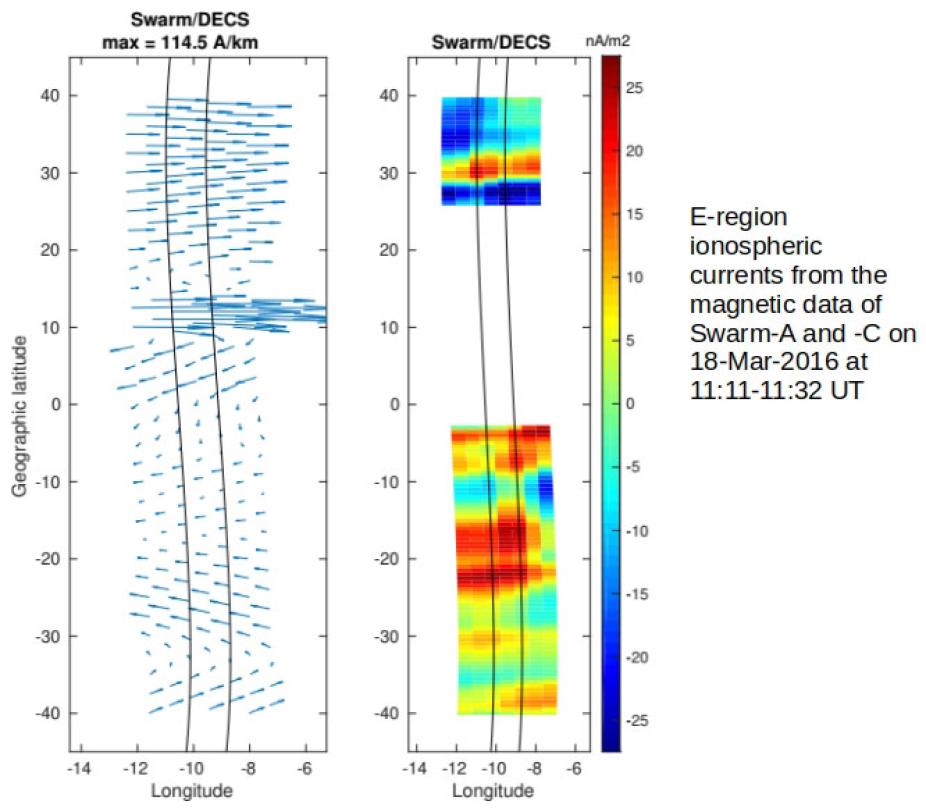Publication Name: Earth, Planets and Space; First HAO Author: Astrid Maute; Authors as listed in article: Heikki Vanhamaeki, Astrid Maute, Patrick Alken, Huixin Liu, Kirsti Kauristie
The flow of ionospheric current can be probed by examining magnetic field measurements at the ground and at Low-Earth-Orbit (LEO) altitude. The interpretation of the magnetic field perturbations with respect of ionospheric current flow is complicated by the fact that the perturbations reflect the integrated effect of current flow close-by and far-away.

Maps of the E-region horizontal and radial currents for 18 March 2016 at 11:22 UT. The horizontal current from Swarm/DECS analysis (left panel) and the radial current from the Swarm/DECS analysis (right panel). Swarm-A/C orbits are shown as black lines.
Therefore, some assumptions about the current flow have to be made. At high latitudes, it is assumed that the field-aligned current (FAC) flows radially into or out of the ionosphere. The technique of spherical elementary current systems (SECS) uses these assumptions and is a powerful way to determine ionospheric and field-aligned currents (FAC) from magnetic field measurements. The SECS method consists of two sets of basic functions for the ionospheric currents: divergence-free (DF) and curl-free (CF) components, which produce poloidal and toroidal magnetic fields, respectively. At middle and low latitudes, the FACs are far from radial, and therefore the original SEC method is inapplicable at these latitudes. In this study, we modify the original curl-free SECS by including FAC that flow along dipolar field lines. This allows the method to be applied at all latitudes. We name this method Dipolar Elementary Current Systems (DECS). Application of the DECS to synthetic data, as well as Swarm satellite measurements are carried out, demonstrating the good performance of this method, and its applicability to studies of ionospheric current systems at low and middle latitudes.